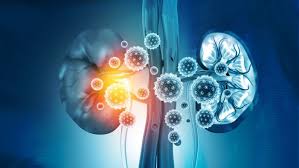Top 10 Challenges Facing the Acute Kidney Injury Treatment Market and How to Overcome Them
9 min read
Acute kidney injury (AKI) is a serious condition characterized by a sudden decrease in kidney function, leading to the accumulation of waste products in the blood. AKI can result from various causes, including dehydration, infection, and exposure to nephrotoxic drugs. The global acute kidney injury treatment market was valued at USD 44.23 billion in 2023 and is expected to reach USD 76.04 billion by 2032, growing at a compound annual growth rate (CAGR) of 6.2%. Despite this growth, the market faces several significant challenges that need to be addressed to improve patient outcomes and access to care. This article will identify the top 10 challenges in the AKI treatment market and propose solutions to overcome them.
Regulatory Hurdles
Overview of Regulatory Challenges in the AKI Treatment Market
Regulatory hurdles are one of the primary challenges facing the AKI treatment market. The process of getting new treatments and drugs approved by regulatory bodies, such as the U.S. Food and Drug Administration (FDA) and the European Medicines Agency (EMA), is rigorous and time-consuming. This process ensures the safety and efficacy of new treatments but can also delay their availability to patients in need.
Impact of Stringent Regulations on Drug and Treatment Approvals
Stringent regulations can significantly impact the speed at which new treatments are brought to market. The extensive clinical trials required to demonstrate safety and efficacy can take several years and substantial financial investment. These delays can be particularly challenging for patients with AKI, who may not have access to the latest and most effective treatments.
Proposed Solutions
Streamlining the Approval Process: Regulatory bodies can work towards streamlining the approval process for AKI treatments. This can be achieved by adopting accelerated approval pathways for promising therapies and drugs that address unmet medical needs.
Collaboration Between Regulatory Bodies and Pharmaceutical Companies: Enhanced collaboration between regulatory bodies and pharmaceutical companies can facilitate the sharing of information and expedite the approval process. Early engagement and continuous dialogue can help identify potential issues and address them proactively.
Encouraging Adaptive Regulatory Frameworks for Innovative Treatments: Regulatory agencies should consider adopting adaptive regulatory frameworks that allow for conditional approvals based on preliminary evidence, with ongoing monitoring and data collection to ensure safety and efficacy.
High Treatment Costs
Examination of the Costs Associated with AKI Treatment
The treatment of AKI can be expensive, involving advanced therapies, prolonged hospital stays, and specialized medical care. High treatment costs can be a significant burden for patients, healthcare providers, and payers, particularly in regions with limited healthcare funding.
Factors Contributing to High Treatment Costs
Several factors contribute to the high costs of AKI treatment, including the use of advanced medical technologies, the need for intensive care, and the cost of medications and dialysis. Additionally, the management of complications and the need for long-term follow-up care can further increase the financial burden.
Proposed Solutions
Promoting Cost-Effective Treatment Options: Healthcare providers should focus on promoting cost-effective treatment options that provide the best outcomes for patients. This includes the use of generic medications, optimizing dialysis protocols, and implementing evidence-based practices.
Implementing Value-Based Pricing Models: Pharmaceutical companies and payers can explore value-based pricing models that link the cost of treatment to the outcomes achieved. This approach ensures that patients receive effective treatments while controlling costs.
Enhancing Insurance Coverage and Reimbursement Policies: Policymakers should work towards enhancing insurance coverage and reimbursement policies for AKI treatments. This includes expanding access to public and private insurance plans and ensuring that essential treatments are covered.
Limited Access to Treatment
Analysis of Accessibility Issues in Various Regions
Access to AKI treatment varies significantly across different regions, with disparities in healthcare infrastructure, resources, and availability of specialized care. In many low- and middle-income countries, patients face significant barriers to accessing timely and effective treatment.
Disparities in Healthcare Infrastructure and Resources
Healthcare infrastructure and resources are often limited in underserved regions, affecting the availability of diagnostic tools, treatment facilities, and trained healthcare professionals. These disparities can lead to delays in diagnosis and treatment, resulting in poorer outcomes for patients with AKI.
Proposed Solutions
Expanding Healthcare Infrastructure in Underserved Areas: Governments and international organizations should prioritize expanding healthcare infrastructure in underserved areas. This includes building new healthcare facilities, equipping them with necessary medical technologies, and ensuring adequate staffing.
Leveraging Telemedicine and Mobile Health Technologies: Telemedicine and mobile health technologies can improve access to AKI treatment by connecting patients in remote areas with specialists. These technologies enable remote consultations, monitoring, and follow-up care, reducing the need for travel and improving access to care.
Partnering with NGOs and Government Programs to Improve Access: Collaborations between non-governmental organizations (NGOs), government programs, and private sector partners can help improve access to AKI treatment. These partnerships can facilitate the distribution of resources, training of healthcare workers, and implementation of community-based healthcare initiatives.
Shortage of Trained Healthcare Professionals
Overview of the Shortage of Nephrologists and Trained Healthcare Providers
There is a global shortage of nephrologists and trained healthcare providers specializing in AKI treatment. This shortage affects the quality and availability of care for patients with AKI, leading to delayed diagnoses and suboptimal treatment.
Impact on Patient Care and Treatment Outcomes
The shortage of trained healthcare professionals can result in longer wait times for patients, inadequate monitoring, and less effective treatment. This can negatively impact patient outcomes, increasing the risk of complications and mortality.
Proposed Solutions
Increasing Funding for Medical Education and Training Programs: Governments and educational institutions should increase funding for medical education and training programs focused on nephrology and AKI treatment. This includes providing scholarships, grants, and other financial incentives to encourage more students to enter the field.
Offering Incentives and Scholarships for Specialization in Nephrology: Financial incentives and scholarships can attract more healthcare professionals to specialize in nephrology. This can help address the shortage of trained providers and improve the availability of specialized care for AKI patients.
Promoting Continuous Professional Development and Training: Continuous professional development and training programs are essential to keep healthcare providers updated on the latest advancements in AKI treatment. This includes workshops, conferences, and online courses that provide ongoing education and skill development.
Early Diagnosis and Detection Challenges
Discussion on the Difficulties of Early AKI Diagnosis
Early diagnosis of AKI is challenging due to the lack of specific symptoms and reliable biomarkers. Many patients present with non-specific symptoms that can be mistaken for other conditions, leading to delays in diagnosis and treatment.
Lack of Reliable Biomarkers and Screening Methods
Current diagnostic tools for AKI are limited, with a lack of reliable biomarkers and screening methods. Traditional tests, such as serum creatinine levels, may not detect AKI in its early stages, making it difficult to intervene promptly.
Proposed Solutions
Investing in Research for New Biomarkers and Diagnostic Tools: Research and development efforts should focus on identifying new biomarkers and diagnostic tools for early detection of AKI. This includes exploring novel molecular markers, imaging techniques, and point-of-care tests that can provide accurate and timely diagnoses.
Implementing Routine Screening Programs for At-Risk Populations: Routine screening programs for at-risk populations, such as patients with chronic kidney disease, diabetes, or cardiovascular disease, can help detect AKI early. Implementing standardized screening protocols in healthcare settings can improve early diagnosis and intervention.
Educating Healthcare Providers on Early Signs and Symptoms: Healthcare providers should be educated on the early signs and symptoms of AKI to improve diagnostic accuracy. This includes training programs, workshops, and educational materials that highlight the importance of early recognition and intervention.
Variability in Treatment Standards
Examination of Inconsistent Treatment Protocols Across Regions
Treatment protocols for AKI vary widely across different regions and healthcare settings. This variability can lead to inconsistent care and disparities in patient outcomes, affecting the overall effectiveness of AKI treatment.
Impact of Variability on Patient Outcomes
Inconsistent treatment standards can result in suboptimal care, with patients receiving different treatments based on their location and the resources available. This can lead to disparities in outcomes, with some patients experiencing better recovery and fewer complications than others.
Proposed Solutions
Developing and Promoting Standardized Treatment Guidelines: Developing and promoting standardized treatment guidelines for AKI can help ensure consistent and high-quality care. These guidelines should be evidence-based and adaptable to different healthcare settings.
Encouraging Adherence to Evidence-Based Practices: Healthcare providers should be encouraged to adhere to evidence-based practices in AKI treatment. This includes regular training and education on the latest research and guidelines to ensure that care is based on the best available evidence.
Facilitating Global Collaboration and Knowledge Exchange: Global collaboration and knowledge exchange can help standardize treatment protocols and improve care. This includes international conferences, research collaborations, and online platforms that allow healthcare providers to share best practices and learn from each other.
Patient Awareness and Education
Analysis of Low Patient Awareness About AKI and Its Management
Many patients are unaware of AKI and its potential complications, leading to delays in seeking treatment and poor adherence to management protocols. Low patient awareness can result in worse outcomes and higher rates of hospitalization.
Consequences of Inadequate Patient Education
Inadequate patient education can lead to a lack of understanding of the importance of early intervention and adherence to treatment plans. This can result in poor management of AKI, increased risk of complications, and reduced quality of life for patients.
Proposed Solutions
Launching Public Awareness Campaigns: Public awareness campaigns can help educate patients and the general public about AKI, its risk factors, and the importance of early intervention. These campaigns can be conducted through various media channels, including television, radio, social media, and community outreach programs.
Providing Educational Resources and Support for Patients and Caregivers: Providing educational resources and support for patients and caregivers can improve understanding and management of AKI. This includes informational brochures, online resources, support groups, and educational workshops.
Encouraging Patient Involvement in Treatment Decisions: Encouraging patients to be actively involved in their treatment decisions can improve adherence and outcomes. Healthcare providers should engage patients in discussions about their treatment options, goals, and preferences, empowering them to take an active role in their care.
Research and Development Limitations
Overview of Challenges in AKI Research and Development
Research and development (R&D) in AKI treatment face several challenges, including limited funding, a lack of focus compared to other diseases, and the complexity of the condition. These challenges can hinder the development of new treatments and innovations in AKI care.
Limited Funding and Focus on AKI Compared to Other Diseases
AKI often receives less attention and funding compared to other diseases such as cancer and cardiovascular disease. This limited focus can result in fewer resources dedicated to understanding and treating AKI, slowing the progress of R&D efforts.
Proposed Solutions
Increasing Investment in AKI Research: Governments, private organizations, and philanthropic entities should increase investment in AKI research. This includes funding for basic science, clinical trials, and translational research to develop new treatments and improve understanding of the condition.
Fostering Public-Private Partnerships for Collaborative Research: Public-private partnerships can facilitate collaborative research efforts, combining resources and expertise from different sectors. These partnerships can accelerate the development of new treatments and innovations in AKI care.
Promoting Clinical Trials and Innovation in AKI Treatment: Encouraging the participation of patients in clinical trials and promoting innovation in AKI treatment can help bring new therapies to market. Healthcare providers and researchers should actively engage in clinical research and support initiatives that advance the field.
Post-Treatment Care and Monitoring
Discussion on the Importance of Post-Treatment Care for AKI Patients
Post-treatment care and monitoring are critical for patients recovering from AKI. Effective post-treatment care can prevent complications, reduce the risk of recurrence, and improve long-term outcomes.
Challenges in Long-Term Monitoring and Follow-Up
Long-term monitoring and follow-up care for AKI patients can be challenging due to limited resources, lack of standardized protocols, and difficulties in patient adherence. These challenges can result in inadequate care and poor outcomes for patients.
Proposed Solutions
Developing Comprehensive Post-Treatment Care Programs: Developing comprehensive post-treatment care programs that include regular follow-up visits, monitoring of kidney function, and management of comorbidities can improve outcomes for AKI patients. These programs should be tailored to individual patient needs and include multidisciplinary care teams.
Utilizing Health Information Technology for Patient Monitoring: Health information technology, such as electronic health records (EHRs) and remote monitoring systems, can facilitate effective post-treatment care. These technologies enable continuous monitoring of patient health, early detection of issues, and timely interventions.
Coordinating Care Among Multidisciplinary Teams: Coordinating care among multidisciplinary teams, including nephrologists, primary care physicians, nurses, and other healthcare providers, can ensure comprehensive and holistic care for AKI patients. This collaborative approach can improve patient outcomes and reduce the risk of complications.
Media Contact:
Company Name: Claight Corporation
Contact Person: Jhon Roy, Business Consultant
Email: sales@expertmarketresearch.com
Toll Free Number: US +1-415-325-5166 | UK +44-702-402-5790
Address: 30 North Gould Street, Sheridan, WY 82801, USA
Website: www.expertmarketresearch.com




